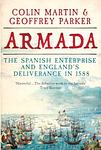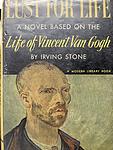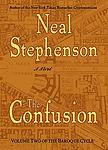The Greatest American "Netherlands" Books of All Time
Click to learn how this list is calculated.
This list represents a comprehensive and trusted collection of the greatest books. Developed through a specialized algorithm, it brings together 300 'best of' book lists to form a definitive guide to the world's most acclaimed books. For those interested in how these books are chosen, additional details can be found on the rankings page.
Genres
Countries
Date Range
Reading Statistics
Click the button below to see how many of these books you've read!
Download
If you're interested in downloading this list as a CSV file for use in a spreadsheet application, you can easily do so by clicking the button below. Please note that to ensure a manageable file size and faster download, the CSV will include details for only the first 500 books.
Download-
1. The Goldfinch by Donna Tartt
The book follows the life of a young boy who survives a terrorist bombing at an art museum, which kills his mother. In the confusion following the explosion, he steals a priceless Dutch painting, The Goldfinch, which becomes his secret treasure and eventually draws him into the criminal underworld. The narrative explores themes of loss, survival, and the power of art to shape human destiny.
-
2. The Armada by Garrett Mattingly
"The Armada" is a comprehensive historical account of the attempted invasion of England by the Spanish Armada in 1588. This work meticulously chronicles the political and religious turmoil of the era, the strategic planning and execution of the naval campaign by the Spanish, and the defensive maneuvers of the English under the leadership of Queen Elizabeth I. The narrative delves into the personalities of key figures, the technological and tactical aspects of 16th-century naval warfare, and the broader European context, culminating in a detailed examination of the battles and the Armada's eventual disastrous defeat, which had lasting consequences for the balance of power in Europe.
-
3. Lust For Life by Irving Stone
This novel is a vivid portrayal of the tumultuous and passionate life of a renowned post-impressionist painter. It delves deeply into his struggles with poverty, mental illness, and a largely unappreciated genius during his lifetime. The narrative is rich with the artist's fervent desire to capture the essence of life and beauty through his revolutionary art, despite facing rejection and misunderstanding from those around him. Through a blend of factual research and imaginative interpretation, the book brings to life the painter's intense relationships, his bouts of fervor and despair, and his relentless pursuit of artistic innovation and expression, offering readers a compelling insight into the soul of a man who transformed pain and tragedy into some of the world's most beloved works of art.
-
4. Girl in Hyacinth Blue by Susan Vreeland
The novel explores the history of a fictional painting by Vermeer, as it passes through the hands of various owners. The narrative traces back from the present day to the time of the painting's creation, revealing the profound impact it has had on those who possessed it. The painting's subjects, a young girl in a blue dress, also becomes a symbol of beauty, loss, and the enduring power of art. The novel is a series of interconnected stories that together form a rich tapestry of human experience and the power of art to transform lives.
-
5. Dear Theo: The Autobiography of Vincent Van Gogh by Irving Stone, Jean Stone
The book is a compilation of letters from the renowned Dutch painter to his brother Theo, offering an intimate glimpse into the artist's life, thoughts, and struggles. Through these personal correspondences, readers gain insight into the painter's evolving artistic vision, his financial hardships, and his battle with mental illness. The letters also reveal the deep bond between the brothers, with Theo providing unwavering emotional and financial support. This collection not only sheds light on the painter's complex inner world but also provides a unique perspective on his journey to becoming one of the most influential figures in the history of Western art.
-
6. The Rape of Europa by Lynn Nicholas
"The Rape of Europa" is a comprehensive study of the systematic theft and deliberate destruction of Europe's art treasures during World War II. The book explores the Nazis' obsession with art, their looting of museums and private collections, and their efforts to eradicate the artistic heritage of the people they sought to dominate. It also highlights the heroic efforts of art historians and curators who risked their lives to protect these treasures, as well as the ongoing efforts to recover and return the stolen art.
-
7. Quicksilver by Neal Stephenson
"Quicksilver" by Neal Stephenson is the first book in "The Baroque Cycle" trilogy, set in the late 17th and early 18th centuries. The story follows the life of Daniel Waterhouse, a member of the Royal Society, as he navigates through a world of scientific discoveries, political intrigue, and personal relationships. From the coffeehouses of London to the court of Louis XIV in Versailles, the novel weaves together historical events and fictional characters to create a sprawling epic that explores the birth of modern science and the clash between old and new worldviews.
-
8. Intimacies by Katie Kitamura
"Intimacies" by Katie Kitamura is a novel that follows an interpreter named Ana as she navigates her personal and professional life in The Hague. Ana becomes involved with a married man, explores her own desires and boundaries, and grapples with the complexities of language and communication. Along the way, she becomes entangled in a high-profile case involving a war criminal, forcing her to confront the moral implications of her work and her own actions. The book explores themes of intimacy, power, and morality, and raises questions about the nature of relationships and the limits of human connection.
-
9. The Baroque Cycle by Neal Stephenson
The Baroque Cycle is an expansive historical fiction series that weaves together a rich tapestry of themes including science, politics, philosophy, and adventure during the late 17th and early 18th centuries. The narrative follows an eclectic cast of characters, ranging from natural philosophers and mathematicians to pirates and nobles, as they navigate the complex socio-political transformations of the Enlightenment era. The series delves into the origins of modern finance, the scientific revolution, and the geopolitical power shifts of the time, all while exploring the intricate interplay between the emerging modern world and the intricate, ornate culture of the Baroque period.
-
10. The Americanization of Edward Bok by Edward Bok
"The Americanization of Edward Bok" is an autobiography that chronicles the author's journey from his birth in the Netherlands to his emigration to America at the age of six, and eventually becoming a successful magazine editor. The narrative explores the cultural clashes, struggles, and triumphs he experienced as he sought to assimilate into American society. The author emphasizes the importance of perseverance, hard work, and education in achieving the American dream, providing a timeless tale of immigrant experience in the United States.
Reading Statistics
Click the button below to see how many of these books you've read!
Download
If you're interested in downloading this list as a CSV file for use in a spreadsheet application, you can easily do so by clicking the button below. Please note that to ensure a manageable file size and faster download, the CSV will include details for only the first 500 books.
Download








